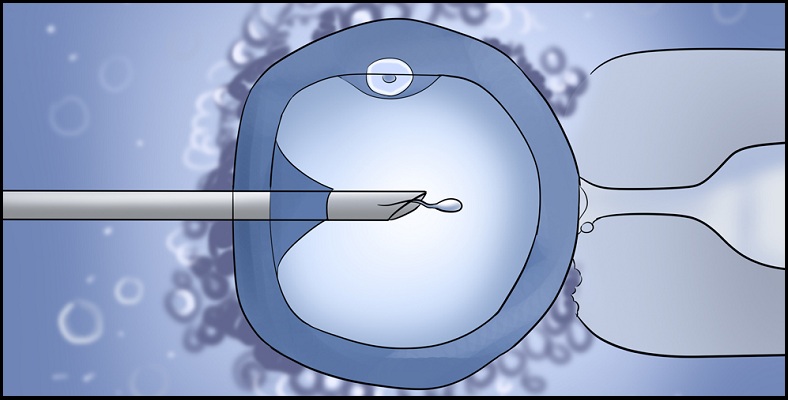
INTRA-CYTOPLASMIC SPERM INJECTION (ICSI)
- Description
- Faq's
Intracytoplasmic sperm injection (ICSI) is an assisted reproductive technology (ART) used to treat sperm-related infertility problems. ICSI is used to enhance the fertilization phase of in vitro fertilization (IVF) by injecting a single sperm into a mature egg. The fertilized egg is then placed in a woman's uterus or fallopian tube
Sperm collection :
If sperm cannot be collected by means of masturbation, they are surgically removed from a testicle through a small incision. This method may be used when there is a blockage that prevents sperm from being ejaculated or when there is a problem with sperm development. To screen for genetic problems that could affect offspring, experts recommend that men with little or no sperm in their semen (not due to a blockage) have genetic testing before they start ICSI.
Ovulation and egg retrieval :
To prepare for a procedure using your own eggs, you must get daily shots and be closely monitored for 2 weeks before the eggs are collected. At home, you or your partner injects you with gonadotropin or follicle-stimulating hormone (FSH) to stimulate your ovaries to produce multiple eggs. This is called superovulation. After the first week, your doctor checks your blood estrogen levels and uses ultrasound to see if eggs are maturing in the follicles. During the second week, your dosage may change based on test results and ultrasound. If follicles fully develop, you are given a human chorionic gonadotropin (hCG) shot to stimulate the follicles to mature. The mature eggs are collected 34 to 36 hours later. This is done using laparoscopy or needle aspiration guided by ultrasound through the belly to the ovaries.
Sperm injection and transfer :
A glass tool is used to hold an egg in place. A tiny glass tube is used to put one sperm into the egg. After culturing in the lab overnight, eggs are checked to see if they've been fertilized. After incubation, the eggs that have been successfully fertilized or have had 3 to 5 days to further develop are selected. One or more are placed in the uterus using a thin flexible tube (catheter) that is inserted through the cervix. Your doctor will recommend how many embryos to transfer, based on your age and other information about you. The other embryos may be frozen for future use.
What To Expect After Treatment :
The shots, monitoring, and procedures for in vitro fertilization (IVF) can be emotionally and physically demanding of the mother. Superovulation with hormones requires regular blood tests, daily shots, and frequent monitoring by your doctor. Some of the shots can be quite painful.
These procedures are done on an outpatient basis. They require only a short recovery time. Your doctor may advise you to avoid strenuous activities for the rest of the day.Why It Is Done :
ICSI is used to treat severe male infertility, as when little or no sperm are ejaculated in the semen. Immature sperm collected from the testicles usually can't move about and are more likely to fertilize an egg through ICSI.
ICSI can be used even if a couple's infertility is not related to a problem with sperm. Some couples choose to try ICSI after repeat in vitro fertilization has not worked. ICSI is also used for couples who are planning to test the embryo for certain genetic problems. ICSI uses only one sperm for each egg. So there is no chance the genetic test can be contaminated by other sperm.How Well It Works :
Used with in vitro fertilization and eggs of good quality, ICSI often is successful for men who have impaired or no sperm in the ejaculate. ICSI (using sperm collected from the testicles) produces an estimated 25% to 30% birth rate.
